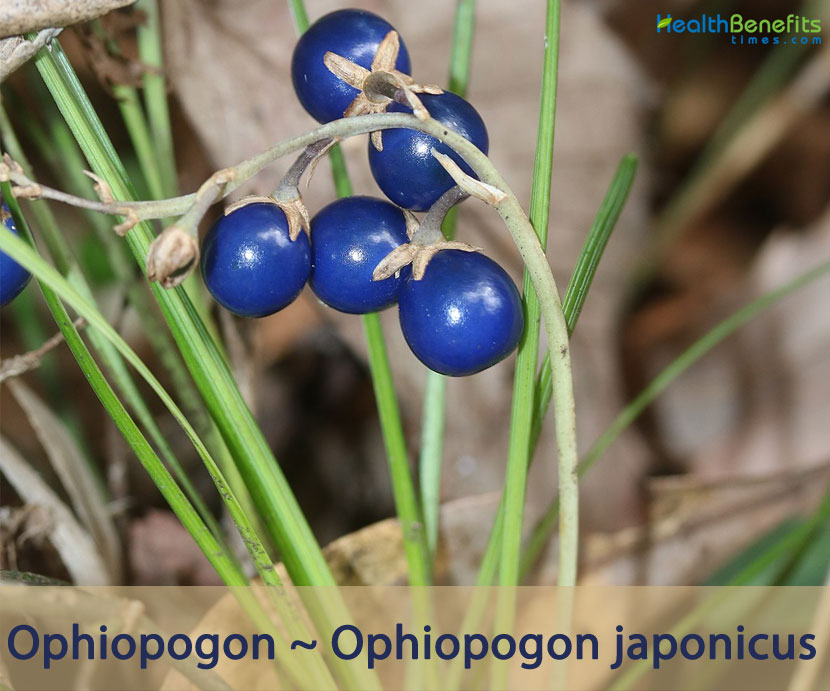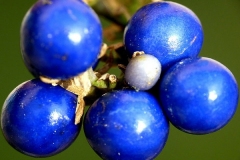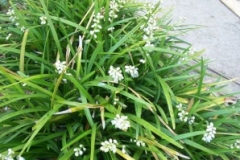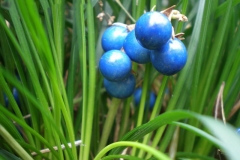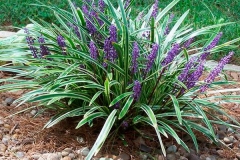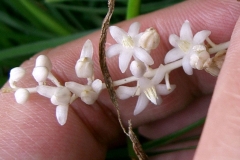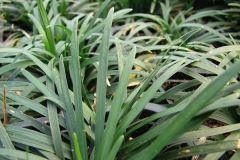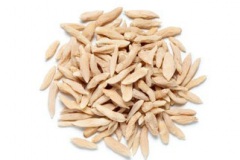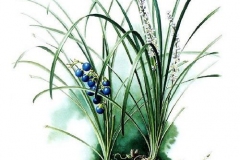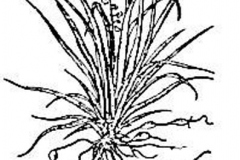| Ophiopogon Quick Facts | |
|---|---|
| Name: | Ophiopogon |
| Scientific Name: | Ophiopogon japonicus |
| Origin | East Asia – China (Anhui, Fujian, Guangdong, Guangxi, Guizhou, Hebei, Henan, Hubei, Hunan, Jiangsu, Jiangxi, Shaanxi, Shandong, Sichuan, Yunnan, Zhejiang), India, Japan, Vietnam, Korea, Taiwan and the Philippines |
| Colors | Blue violet |
| Shapes | Berry sub globose to ellipsoid–globose, 5–9 mm in diameter |
| Taste | Sweet, bitter |
| Health benefits | Support for Inflammation, Immune System, Coughs and Respiratory Problems, Cancer, Blood Flow, Diabetes and treat sores. |
| Name | Ophiopogon |
|---|---|
| Scientific Name | Ophiopogon japonicus |
| Native | East Asia – China (Anhui, Fujian, Guangdong, Guangxi, Guizhou, Hebei, Henan, Hubei, Hunan, Jiangsu, Jiangxi, Shaanxi, Shandong, Sichuan, Yunnan, Zhejiang), India, Japan, Vietnam, Korea, Taiwan and the Philippines – Luzon (Benguet Province) and Mindanao (Mt. Apo) |
| Common Names | Dragon’s Beard, Dwarf Lily turf, Fountain Plant, Mondo Grass, Japanese Lily Turf, Japanese Snake’s Beard, Liriopogon, Monkey Grass, Ophiopogon, Snake’s Beard, Dwarf mondo grass, Black dragon grass, Dragon’s beard grass, Mai men dong, Kokuryu, Aztec grass, creeping lily-turf |
| Name in Other Languages | Azerbaijani: Yapon ofiopoqonu Brazil : Grama Preta Chinese : Mai Dong (麦冬), Mai Men Dong Croatian: Japanska trava Czech : Sedoulek Japonský Danish : Japansk Slangeskæg Dutch : Japanse Slangenbaard, Ophiopogonus, Japans slangengras, slangebaard English: Dwarf lilyturf, Mondo-grass, Ophiopogon, Snake’s-beard, Lily turf grass, monkey grass Finnish: Mukulakäärmeenparta French : Herbe Aux Turquoises, Muguet Du Japon, Ophiopogon, barbe de serpent German : Japanischer Schlangenbart Italian: Mughetto giapponese, mughetto rosa Japanese: Ja-No-Hige (ジャノヒゲ), Ryu-No-Hige (リュウノヒゲ) Korean : Jobnipmaekmundongajaebi, so yeop maek mun dong (소엽맥문동) Persian: افیوپگن جاپنیکا Philippines : Langigit Portuguese : Grama-Preta, Ofi opógão-Do-Japão, Pêlo-De-Urso, Mini-grama-preta, Pelo-de-urso Russian : Ofi opogon Japonskij, ofiopogon yaponskiy (офиопогон японский) Spanish: Convalaria, gramita Swedish : Ormskägg, ciklidgräs Vietnamese: Mạch Ðông, Mach Món, Mach Môn Dông, Tóc Tiên, Lan Tiên, Xà Thảo, Duyên Giới Thảo, Phiếc Kép Phạ, Mạch môn |
| Plant Growth Habit | Evergreen, tuft-forming stoloniferous, tuberous-rooted, rhizomatous perennial plant |
| Growing Climates | Occurs in shady places in lowland and foothills, forests, mossy forests, dense scrub in ravines, moist and shady places on slopes and along streams and cliffs |
| Soil | Grows well in full sun or partial shade in well-drained, moist sandy or sandy loam soils |
| Plant Size | About 10 – 30 cm (4 – 12 inches) in height, depending on the variety |
| Stem | Stem suberect or prostrate, usually simple, elongate or short, sometimes indistinct. |
| Leaf | Leaves are basal, sessile, fasciculate, linear, generally 15–50 cm long and 2–4 mm wide, 3–7 parallel veined, margin serrulate. They are dark green above and pale glaucous beneath |
| Flowering season | July-August |
| Flower | Flowers are solitary or paired, usually pendant; pedicel 34 mm. Tepals 6-lobed, white or pale lilac, lanceolate, 5 mm long and 2 mm wide. Filaments are very short; anthers 2.53 mm long and lanceolate. Style is narrowly conical, 4 mm long, moderately thick, basally widened. |
| Fruit Shape & Size | Berry subglobose to ellipsoid–globose, 5–9 mm in diameter |
| Fruit Color | Blue violet |
| Taste | Sweet, bitter |
| Plant Parts Used | Roots, dry tubers |
| Propagation | Either through seeds or by division of the existing plant |
| Season | September to October |
| Varieties |
|
| Health benefits |
|
Plant Description
Ophiopogon (Mondo Grass) is an evergreen, tuft-forming stoloniferous, tuberous-rooted, rhizomatous perennial plant that normally grows about 10 – 30 cm (4 – 12 inches) in height, depending on the variety. The plant is found growing in shady places in lowland and foothills, forests, mossy forests, dense scrub in ravines, moist and shady places on slopes and along streams and cliffs. The plant grows well in full sun or partial shade in well-drained, moist sandy or sandy loam soils. This species has large stolons with tuberous roots. Stolons are creeping and slender, roots moderately thick, usually with tuberous part near middle or tip.
Leaves
Leaves are basal, sessile, fasciculate, linear, generally 15–50 cm long and 2–4 mm wide, 3–7 parallel veined, margin serrulate. They are dark green above and pale glaucous beneath. Scape is 6–15 (−27) cm, much shorter than leaves. Foliage is similar to that of Liriope (also in the lily family), but leaves are narrower and more refined. Ophiopogon leaves are evergreen and have a leathery appearance.
| Leaf arrangement | Most emerge from the soil, usually without a stem |
| Leaf type | Simple |
| Leaf margin | Entire |
| Leaf shape | Linear |
| Leaf venation | Parallel |
| Leaf type and persistence | Evergreen |
| Leaf blade length | 8 to 12 inches |
| Leaf color | Variegated |
| Fall color | No fall color change |
| Fall characteristic | Not showy |
Flower
Inflorescence in axillary racemes, 1–20 cm long, several to more than 10 flowered with lanceolate white bracts. Flowers are solitary or paired, usually pendant; pedicel 34 mm. Tepals 6-lobed, white or pale lilac, lanceolate, 5 mm long and 2 mm wide. Filaments are very short; anthers 2.53 mm long and lanceolate. Style is narrowly conical, 4 mm long, moderately thick, basally widened. Flowering normally takes place in between July-August.
| Flower color | White |
| Flower characteristic | Summer flowering |
Fruit
Fertile flowers are followed by subglobose to ellipsoid–globose, pea-sized, blue-black berries, 5–9 mm in diameter. Flowers and fruits are usually partially hidden by the foliage. This plant is ornamentally grown for its tufts of grass-like leaves.
| Fruit shape | Unknown |
| Fruit length | Unknown |
| Fruit cover | Unknown |
| Fruit color | Brown |
| Fruit characteristic | Inconspicuous and not showy |
Types of Ophiopogon (Mondo Grass)
Ophiopogon is the name for the plant’s genus. There are many different species within this genus. The most popular species of Ophiopogon are listed below:
Ophiopogon japonicas
Of all the types of Ophiopogon, japonicas are the best known for health benefits. Most scientific studies on the plant also focus on the japonicas species. It has pretty flowers and blue fruits.
Ophiopogon japonicus ‘Variegata’
It is also called Silver Mist mondo grass because of the lines on its blades.
Ophiopogon japonicus ‘Nana’
This variant is called dwarf mondo grass because it only grows to be about 6 inches tall.
Ophiopogon planiscapus ‘Nigrescens’
This type of Ophiopogon is also known as black mondo grass because of its dark blades and pretty pink flowers. It grows to be about 12 inches tall.
Ophiopogon jaburan ‘Vittatus’
The plant is also called variegated mondo grass; this species is larger and more robust. The blades have yellow and green stripes going down them.
Health Benefits of Ophiopogon (Mondo Grass)
In Chinese medicine, Ophiopogon is known as mai men dong. It has been used for thousands of years medicinally. It’s still popular today in natural medicine. There are thousands of scientific studies which support the many health benefits of Ophiopogon. Below are some of the main benefits which are supported by scientific research.
1. Fights Inflammation
Mondo grass consists of good amount of different anti-inflammatory components including ruscogenin, ophiopogonin D, homoisoflavonoids, and fatty acids. Some of these components are completely new and haven’t been found in other plants. Studies on animals found Ophiopogon extract helps to reduce inflammation markers and swelling. (1), (2), (3)
2. Boost Immune System
Ophiopogon consists of polysaccharides which activate macrophages in the body. Macrophages are the specialized cells which kill bacteria and harmful pathogens in the body. Experiments show that taking Ophiopogon helps to increase white blood cell count, DNA synethesis and also make antibodies last longer. The result is a significant boost to immune health. (4), (5), (6)
3. Treat Coughs and Respiratory Problems
Ophiopogon is considered good for different respiratory problems including coughs. It helps the body produce mucus to moisten the lungs while reducing lung inflammation. (7), (8), (9)
4. Anti-Cancer
Mondo grass consists of fifteen steroidal saponins, which are a type of naturally-occurring sugar. These steroidal saponins are interesting because they can kill tumor cells. They are cytotoxic against several human cancer cell lines. Many studies conclude that they have potential as a cancer treatment. (10), (11), (12), (13)
5. Improves Blood Flow
Antioxidant and anti-inflammatory compounds in mongo grass are good for heart health. Animal studies discovered that mondo grass extract decreased blood clots (thrombosis), improved blood flow, and fought against cardiovascular damage. (14), (15), (16)
6. Diabetes Treatment
Mondo grass root consists of a type of water-soluble polysaccharide (OJP1). Studies show that it has many benefits for diabetes treatment, such as reducing blood sugar levels, increasing insulin sensitivity, and treating damage to organs affected by diabetes. (17), (18)
7. Antimicrobial
Extracts from mondo grass root consists of antimicrobial compounds which can kill certain types of fungi and bacteria, including Staph and E. coli. Because mondo grass root also boosts immunity, this makes it a good natural treatment for mild infections. It is also often used as an antibacterial mouth wash for treating sores. (19), (20)
Traditional uses and benefits of Ophiopogon (Mondo Grass)
- The tuber is antitussive, aphrodisiac, expectorant, pectoral, sedative, sialogogue, stomachic, mucolytic, emollient, demulcent, anti- pyretic, anti-angina, anti-inflammatory, diuretic, cardio tonic, antibacterial, hemostatic, laxative calming, anti-scrofulatic and tonic.
- It is said to have anticancer activity.
- Ophiopogon japonicus is a traditional Chinese medicine used to treat diabetes for thousands of years and a traditional Chinese medicine used to treat cardiovascular disease.
- It is a traditional Chinese medicine being used for treatment of coronary heart disease.
- Shengmai injection (SMI), one of the most popular herbal preparations, is widely used for the treatment of coronary atherosclerotic cardio-pathy and viral myocarditis.
- It has been used to relieve coughing, phlegm and heat in the lungs caused by bacterial infection.
- It is also frequently used to lower blood pressure.
- It is used internally in the treatment of dry coughs, fevers, thirst, dry constipation, insomnia, anxiety and palpitations.
- It is also frequently used in poly-herbal treatments of diabetes mellitus.
- Roots have an antibacterial action, inhibiting the growth of Staphylococcus, E. coli, Bacillus subtilis, B. typhi etc.
- Nodules on the fibrous roots are used as a nutritive tonic in the treatment of TB.
- They are primarily used as a yin tonic, but can also be used for healthy functioning of the heart and lungs.
- It can also be used for moisturizing dry, scaly and itching skin.
- Ingestion of the herb can cool you off internally and is therefore ideal for those who experience acidity, gastric reflux, and other gastric problems.
- The chemical compositions of the herb are useful for the treatment of sleep disorders such as insomnia, somnambulism, and some other parasomnias.
- Ophiopogon can be used to soothe irritated and dried lungs, especially in those who have upper respiratory infections and those who smoke.
- Public speakers and singers, or anyone who uses their vocal chords extensively, may use ophiopogon to soothe and moisten the vocal chords.
- Ophiopogon can also help relieve accumulation of phlegm in the nasal passages as well as sticky sputum in the throat.
- Ophiopogon can be combined with other herbs such as dang gui for relieving severe constipation.
- Ophiopogon can be used to soothe skin affected by eczema.
- Ophiopogon is an antiseptic that is particularly useful in the healing of mouth sores.
- It provides relief for insomnia, heart palpitations, anxiety, and restlessness.
- Ophiopogon is used in formulas to treat constipation, dry throat, and chronic dry bronchitis.
- It is also considered useful in treating the fluid imbalance caused by diabetes, as showed by excessive thirst and urination.
- It is used in treating nearly all lung-related illnesses, including bronchitis, whooping cough, tuberculosis, hemoptysis (coughing up blood), sore throat, laryngitis, and cough.
- The plant is highly effective in addressing dry cough, chronic pharyngitis, pediatric cough, and persistent pneumonia in children especially when in combination with mulberry leaves.
- It prevents various cardiovascular diseases and respiratory infections.
- It alleviates the risk of diabetes and other digestive system diseases.
How to Use Ophiopogon
Decoctions
Traditionally, Ophiopogon root is prepared as a decoction. This involves boiling the root in water for about one hour or even longer. Decoction is strained and the liquid is consumed. The benefit of decoctions is that concentrate medicinal components of the plant into the water. However, it is tricky to control dosage with decoctions and boiling can destroy some of the nutritional benefits of the Ophiopogon root. To make, you’ll need to take a heaping tablespoon of mondo grass root and gently cook it in 1 quart of
Dried Decoctions
Dried (or granular) decoctions are made by cooking mondo grass root in large tanks. The liquid is strained and evaporated so only syrup is left. The syrup goes through a spray dryer to produce a dried product.
The benefit of mondo grass dried decoctions is that they are very concentrated. The final product should be better than what you’d make at home, thus allowing you to get more health benefits out of a smaller dosage. Then drink the decoction throughout the day.
This mondo grass decoction is made by an Asian brand which specializes in natural medicine. The decoction is in a granular form. It consists of five main ingredients: mondo grass, pinellia ternata (crow dipper root), Zizyphus jujube (red date), ginseng and licorice. These ingredients are particularly good for treating coughs and lung ailments, but also good for a general immunity boost.
Powders
Powdered Ophiopogon root is made by drying the root and then grinding it into a fine powder. You can mix the powder in water or smoothies. Sometimes the powder is pressed into tablets or put in capsules. The powders of Ophiopogon root won’t be as potent as a decoction because it contains the fiber, starches, etc. from the plant. However, some people prefer mondo grass powders because they are raw and theoretically more healthy compounds stay alive.
It’s hard to find Ophiopogon powder though. If you have a garden, consider growing Ophiopogon (it’s easy) so you can harvest the roots for medicinal use.
Culinary uses
- The plant is more widely known as a medicinal herb than a food plant.
- Tuberous root is edible and eaten as a famine food.
- Root is used as food ingredient in Taiwan and as functional food in China often as a substitute for ginseng.
- japonicus is a traditional medicine, admitted as one of functional food ingredient by the Ministry of Health of the People’s Republic of China.
- Root is considered aromatic, sweet and mucilaginous, but other reports say that the bitterness has to be removed before consumption.
Other Facts
- In many countries, it is used as ornamental for borders and lawns.
- It is often sold as a decorative plant for freshwater aquaria, but does not last long in water.
- It forms a good carpeting plant, spreading rapidly and is commonly planted as a ground cover or as a low- maintenance grass substitute.
- It is particularly valuable for preventing soil erosion.
- Dwarf lilyturf has been known to be both a cover crop with weed suppression for gardening in Japan and a medicinal plant.
- It is a good carpeting plant that spreads quite freely; it is commonly planted as a ground cover or as a low-maintenance grass substitute.
- Plants should be spaced about 45 cm apart each way.
Precautions
- Avoid use in case of Weak spleen, coldness in stomach and diarrhea.
- It may cause drowsiness, nausea, vomiting, anxiety, restlessness, acute abdominal pain, itching and delirium.
- Ophiopogon is a therapeutic herb with many benefits; it can cause side effects when consumed in large quantities.
- It is best to use it sparingly if you have a cold.
- Also try and avoid using this herb when you have a deficient or a malfunctioning spleen.
- Excessive consumption of the herb can also cause diarrhea.
References:
https://www.itis.gov/servlet/SingleRpt/SingleRpt?search_topic=TSN&search_value=506477#null
https://npgsweb.ars-grin.gov/gringlobal/taxon/taxonomydetail?id=25788
https://pfaf.org/user/Plant.aspx?LatinName=Ophiopogon+japonicus
https://www.cabi.org/isc/datasheet/115956
https://www.missouribotanicalgarden.org/PlantFinder/PlantFinderDetails.aspx?kempercode=s960
https://gd.eppo.int/taxon/OPPJA
https://powo.science.kew.org/taxon/urn:lsid:ipni.org:names:429781-1
http://www.theplantlist.org/tpl1.1/record/kew-279475
http://www.stuartxchange.com/MondoGrass.html
https://www.uaex.uada.edu/yard-garden/resource-library/plant-week/black-mondo-grass-2-24-12.aspx
https://en.wikipedia.org/wiki/Ophiopogon_japonicus
http://tropical.theferns.info/viewtropical.php?id=Ophiopogon+japonicus
https://plants.usda.gov/home/plantProfile?symbol=OPJA


